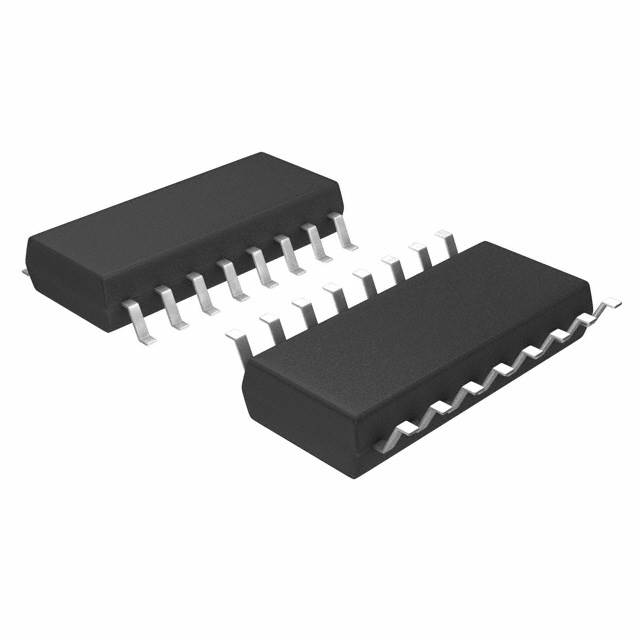SN75C1168NSR Solves Common Sensor Network Challenges

Industrial sensor networks frequently encounter challenges such as unreliability or frequent breakdowns, leading to costly delays. To address these issues, a robust solution is essential for operating effectively in demanding environments. The SN75C1168NSR is an excellent choice, offering reliable full-duplex communication transmission for PLC control in industrial bus systems and sensor networks. This component enhances signal strength and integrates seamlessly with existing systems. Its durable design ensures long-lasting performance, even in harsh conditions. Incorporating the SN75C1168NSR can significantly improve the efficiency and reliability of your industrial tools and sensor network operations.
Key Takeaways
The SN75C1168NSR makes signals stronger and cuts down noise. This helps sensors talk clearly in factories.
Its tough design works well in very hot or cold places. It also handles rough factory conditions easily.
The part connects with older systems using RS-485 and RS-422. This lets factories upgrade without spending too much money.
It allows two-way communication, which speeds up data sharing. This helps factories work faster in tasks like automation.
Using the SN75C1168NSR saves power and lowers expenses. It's a smart pick for long-term factory use.
Common Problems in Industrial Sensor Networks
Issues with Reliability and Signals
Keeping communication steady in sensor networks is tough. When transmitters and receivers are far apart, signals weaken. This can cause missing data and more failed transmissions.
Studies show that longer distances between transmitters and receivers lead to more incomplete LoRa packets. This increases the chance of failed transmissions. LoRaWAN works for long distances, but low power and obstacles make it hard to keep signals strong.
These problems often happen in big factories or faraway places. Weak signals can delay data collection and slow decisions, which are vital for industries.
Tough Environmental Conditions
Factories often have extreme heat, cold, or interference. These conditions can mess up the data collected by wireless sensors.
Hard environments can change input data, making systems less accurate.
Interference in these places causes bad data, hurting maintenance and efficiency.
If your network works in such places, you might see bad data or slower performance. Making networks strong and durable is key to keeping them reliable.
Problems with Old Systems
Connecting new sensor networks to old systems is tricky. Many old systems don’t use standard protocols, making it hard to link them to new tech.
Old systems often don’t work well with modern tools.
Custom interfaces may not match new systems, causing problems.
Missing documents make it hard to understand old systems and their parts.
These issues can slow upgrades and stop networks from growing. Fixing these problems is important for smooth connections and better efficiency.
How SN75C1168NSR Addresses These Challenges
Better Signal Strength and Less Noise
The SN75C1168NSR improves communication by boosting signals and cutting noise. It uses a low-power driver made for fast data transfer in factories. This helps signals stay strong over long distances, keeping networks running well in big areas.
It also works with RS-485 and RS-422 standards. This makes it easy to connect with different devices in your system. Its design is fault-tolerant, meaning it stays stable even if inputs are open or shorted.
Feature | Description |
|---|---|
Low-power differential line driver | Built for fast data transfer in industrial settings. |
Works with RS-485 and RS-422 standards | Connects easily with current systems. |
Fault-tolerant design | Stays reliable even with open or shorted inputs. |
Adding the SN75C1168NSR to your network solves problems like weak signals and noise. It ensures smooth and steady data sharing.
Strong Design for Tough Conditions
Factories can have extreme temperatures. The SN75C1168NSR is made to handle these tough conditions. It works well in temperatures from -40°C to 85°C, whether it's freezing or very hot.
It meets strict industrial rules like MIL-STD-810, proving it can survive harsh places. It also has protection ratings to guard against dust and water:
IP65: Blocks dust and resists water jets.
IP66: Blocks dust and resists strong water jets.
IP67: Blocks dust and resists water up to 1 meter deep.
IP68: Blocks dust and resists water deeper than 1 meter.
These features make the SN75C1168NSR tough and dependable, perfect for hard industrial jobs.
Easy Fit with Current Systems
Adding new parts to old systems can be hard, but the SN75C1168NSR makes it simple. It works with RS-485 and RS-422 standards, so it fits easily into your setup. You won’t need expensive upgrades or special tools.
It also supports full-duplex communication, meaning it can send and receive data at the same time. This is great for sensor networks where quick decisions are needed. Using this part improves your system’s performance without causing disruptions.
Key Features of SN75C1168NSR
Full-Duplex Communication for Faster Data Sharing
Sharing data quickly is important in sensor networks. Real-time decisions need smooth communication. The SN75C1168NSR allows data to move both ways at the same time. This makes sending and receiving data faster and more reliable. It’s perfect for things like factory automation and IoT systems.
Full-duplex systems are better than half-duplex ones:
They let data go both ways, doubling speed.
They cut delays, helping real-time tasks run smoothly.
They handle more traffic without slowing down.
In factories, full-duplex lets sensors and controllers share data fast. This improves how well the system works. Adding the SN75C1168NSR to your network means quicker uploads and downloads, even with heavy use.
Full-duplex also avoids data crashes by using smart Ethernet tools. This keeps communication steady, even in busy networks.
Built for Tough Conditions
The SN75C1168NSR works well in hard factory environments. Its design solves problems like noise, weather changes, and power limits. Here’s a table showing common issues and how this part helps:
Problem | Explanation |
|---|---|
Noisy surroundings | Noise in factories can mess up data. This part keeps it clear. |
Wear and tear over time | Things like water or dirt can hurt sensors. This part stays strong longer. |
Hard to calibrate | Adjusting sensors in the field is tricky. This part reduces errors. |
Limited power | Small power sources can’t run long. This part uses less energy. |
The SN75C1168NSR is tough and works well in noisy places. It’s built to last, even in rough conditions. This makes it a great choice for long-term use.
Saves Energy and Costs
Saving energy is important for sensor networks with small power supplies. The SN75C1168NSR uses little power but still works fast. This lowers costs and helps parts last longer.
Its low-power design keeps the network running without slowing down. It also makes less heat, so you don’t need extra cooling.
The SN75C1168NSR also saves money. It fits with old systems, so no expensive upgrades are needed. You can add it easily without spending extra.
Using the SN75C1168NSR saves energy and money. It’s a smart choice for factories and other industrial jobs.
Real-World Uses and Success Stories
How SN75C1168NSR Helps in Different Industries
The SN75C1168NSR is used in many industries to improve systems. Factories use it to link sensors and controllers over long spaces. It keeps signals strong, making communication smooth in big areas. In farming, it helps track soil and weather data. This lets farmers make better choices to grow more crops.
Hospitals also use this part in medical tools. It sends accurate data for machines like patient monitors. These examples show how the SN75C1168NSR works well in many fields, making it a flexible option for sensor networks.
Boosting Performance and Saving Time
The SN75C1168NSR makes industrial systems work faster and better. It sends and receives data at the same time, cutting delays. This is great for quick tasks like factory automation.
One factory cut downtime by 30% after using this part. Its design blocks noise, so data stays correct even in loud places. It also uses less power, saving money on energy. These benefits show how the SN75C1168NSR improves both speed and cost in sensor networks.
Helping with PLC Control and Maintenance
The SN75C1168NSR is key for PLC control and fixing problems early. Its design sends data fast, helping monitor systems in real time. This finds problems before they cause breakdowns.
Feature | What It Does |
|---|---|
Type | Sends data using four differential lines |
Built For | Fast data sharing in tough conditions |
Uses | Factory tools, RS-485/RS-422 systems, medical devices |
Reliability | Works well even in harsh environments |
Adding the SN75C1168NSR makes your system stronger and cheaper to maintain. It fits easily into complex setups, making it perfect for avoiding costly repairs.
The SN75C1168NSR is a strong choice for sensor networks. It works well in tough places and lasts a long time. Its full-duplex feature makes data sharing faster and systems better.
Tip: Adding the SN75C1168NSR makes upgrades easier and cuts repair costs.
This part helps engineers improve how systems work and connect. Pick the SN75C1168NSR to make your tools better and reliable in hard conditions.
FAQ
Why is the SN75C1168NSR good for tough industrial places?
The SN75C1168NSR handles extreme heat and cold easily. It blocks dust and water, meeting strict rules like MIL-STD-810. Its strong design works well in factories, outdoor areas, and other hard environments.
Can the SN75C1168NSR connect to older systems?
Yes, it works with RS-485 and RS-422 standards. This makes it fit with older setups without needing costly upgrades. You can update your network easily without special tools.
How does full-duplex help sensor networks?
Full-duplex lets data go both ways at once. This cuts waiting time, speeds up data sharing, and helps real-time tasks like factory work and IoT systems run better.
Is the SN75C1168NSR good at saving energy?
Yes! Its design uses less power but still works fast. This lowers costs and helps systems last longer, making it a smart choice for saving money.
Which industries use the SN75C1168NSR the most?
Factories, farms, and hospitals use it a lot. It helps factories run smoothly, improves farming tools, and sends clear data for medical devices. It’s useful in many different jobs.
Tip: Pick the SN75C1168NSR for jobs needing strength, speed, and easy setup.
See Also
Utilizing XCZU3EG-1SFVC784I for Enhanced IoT Applications
Explore CS5460A-BSZ for Precision and Energy Efficiency
Leverage GS2972-IBE3 for Advanced Video Processing Capabilities
C8051F340-GQR by Silicon Labs for Smart Industrial Automation
Achieve Rapid Data Acquisition with AD9231BCPZ-40 Technology

